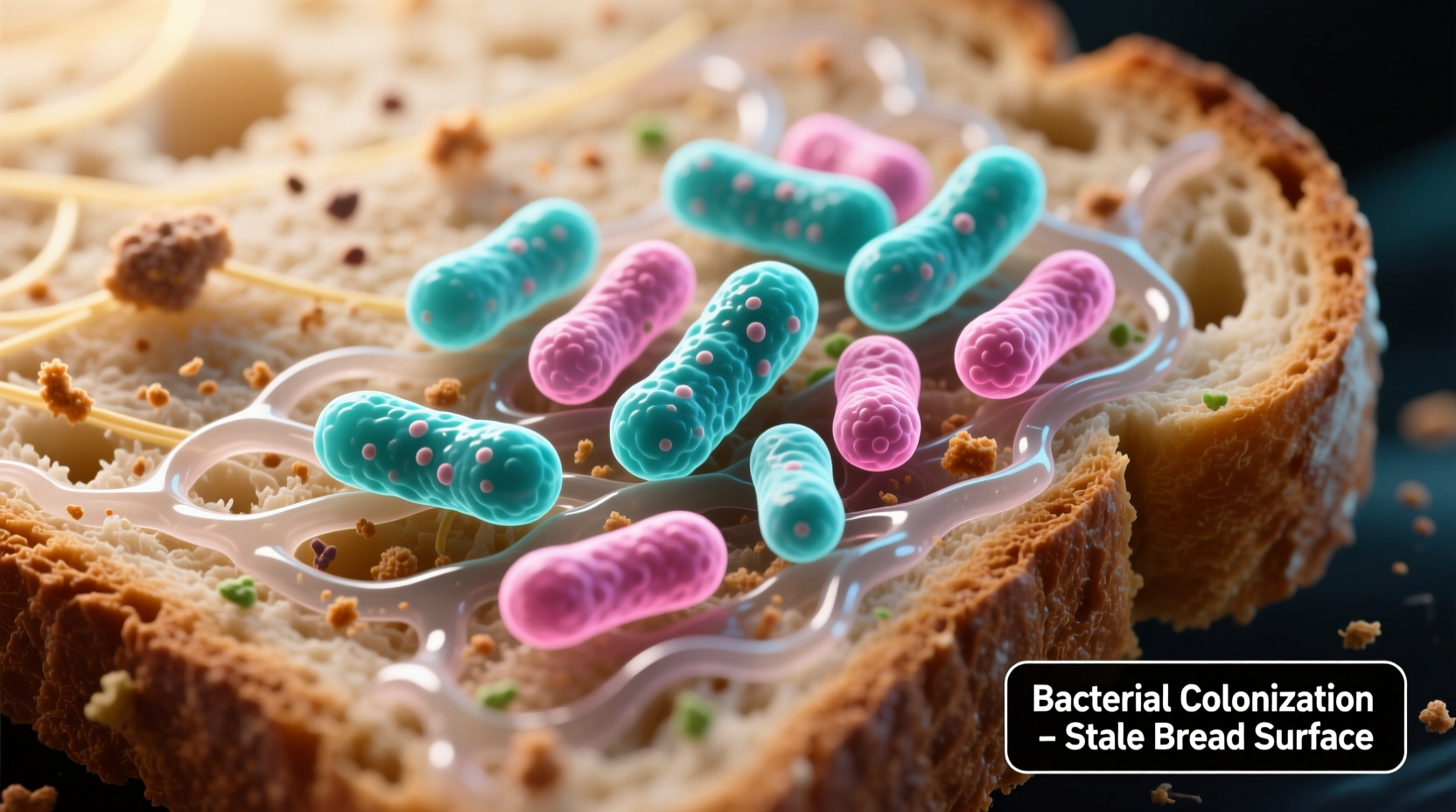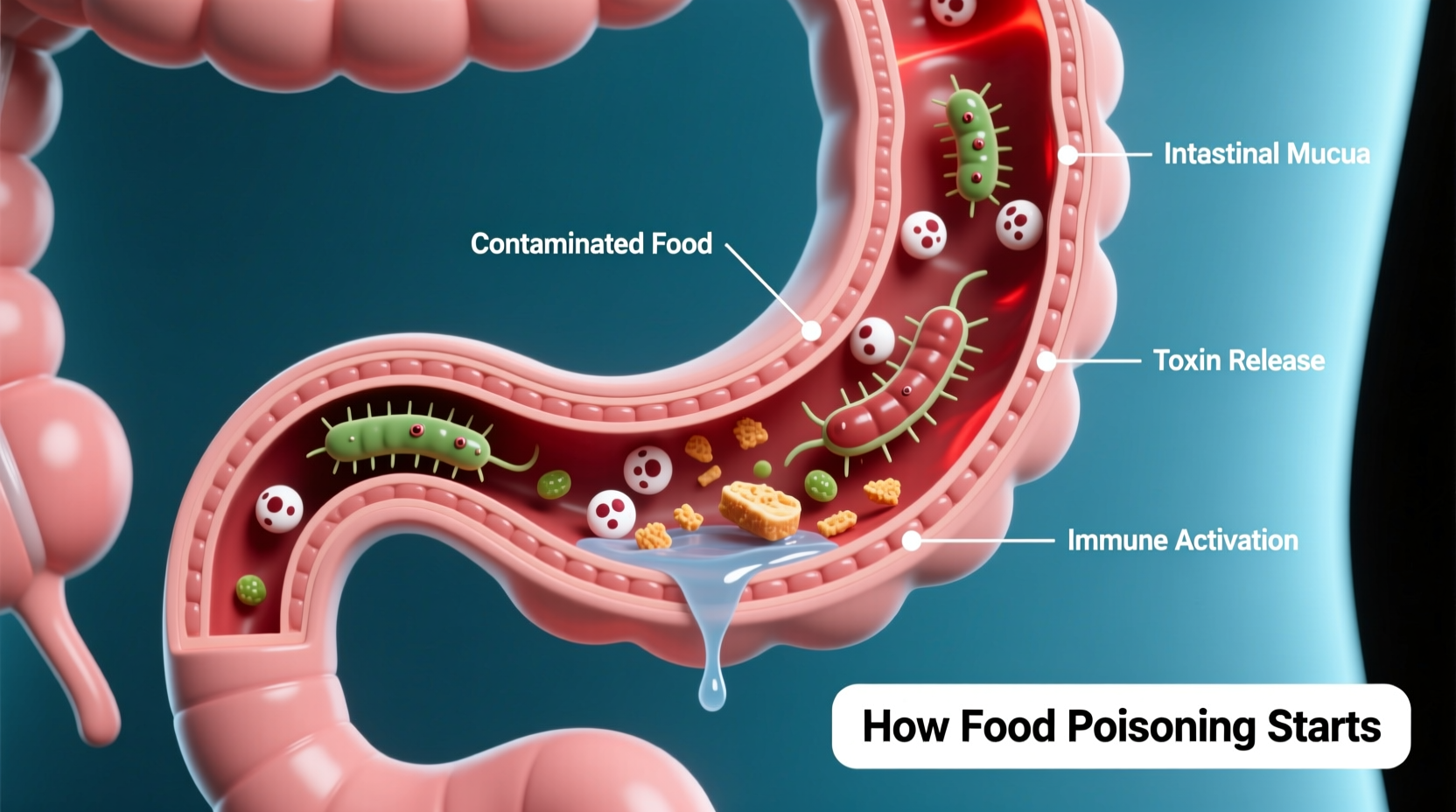Ever bitten into what seemed like a perfectly safe meal only to find yourself doubled over in discomfort hours later? Understanding exactly how does food poisoning start empowers you to recognize early warning signs and prevent serious illness. This guide reveals the precise biological mechanisms behind foodborne illness onset, backed by medical research and food safety experts.
The Critical First Hours: How Contamination Becomes Illness
Food poisoning doesn't happen instantly—it follows a predictable biological sequence that begins the moment contaminated food enters your system. The initial stage of food poisoning involves three critical phases:
- Ingestion: Consuming food or drink containing pathogens (like Salmonella, E. coli, or norovirus) or their toxins
- Colonization: Pathogens attach to your intestinal lining and begin multiplying
- Toxin Production or Invasion: Bacteria either release harmful toxins or directly invade intestinal cells
According to the Centers for Disease Control and Prevention, over 250 foodborne illnesses exist, but they all follow this fundamental progression from contamination to symptoms.
Timeline of Food Poisoning Development
One of the most crucial aspects of understanding how food poisoning starts is recognizing the incubation period—the time between consuming contaminated food and symptom onset. This varies significantly by pathogen:
| Pathogen | Incubation Period | Common Food Sources |
|---|---|---|
| Staphylococcus aureus | 30 minutes - 8 hours | Deli meats, salads, pastries |
| Norovirus | 12-48 hours | Raw shellfish, ready-to-eat foods |
| Salmonella | 6 hours - 6 days | Raw eggs, poultry, unpasteurized milk |
| E. coli O157:H7 | 3-4 days | Undercooked ground beef, leafy greens |
| Listeria | 3-70 days | Soft cheeses, deli meats, smoked seafood |
This food poisoning incubation timeline explains why you might not connect your illness to a specific meal—you could feel fine for days after consuming contaminated food. The FDA Food Code emphasizes that temperature control during food handling directly impacts pathogen growth rates during this critical window.

Biological Mechanisms: What Happens Inside Your Body
When you consume contaminated food, your digestive system becomes a battlefield. Different pathogens employ distinct strategies to initiate illness:
Toxin-Mediated Poisoning
Some bacteria like Staphylococcus aureus and Bacillus cereus produce pre-formed toxins in food before you even eat it. These toxins immediately irritate your intestinal lining upon ingestion, causing rapid symptoms. This explains why how food poisoning starts so quickly with certain contaminants—sometimes within 30 minutes.
Infectious Pathogens
Other pathogens like Salmonella and Shigella must first attach to your intestinal cells, multiply, and then either invade tissue or produce toxins. This process takes longer, creating the delayed onset typical of many foodborne illnesses. Research published in CDC's Morbidity and Mortality Weekly Report shows these pathogens trigger your immune system to release inflammatory chemicals, causing the characteristic cramping and diarrhea.
Early Warning Signs You Might Have Food Poisoning
Recognizing the initial symptoms of food poisoning helps you respond appropriately. The earliest indicators typically include:
- Nausea and stomach discomfort (often the very first sign)
- Mild abdominal cramping
- Excessive sweating or clamminess
- Loss of appetite
- Low-grade fever (in some cases)
These initial symptoms usually progress to more severe manifestations like vomiting and diarrhea within hours. The Mayo Clinic emphasizes that symptom progression speed often indicates the specific pathogen involved.
Common Culprits Behind Food Poisoning Onset
Understanding what causes food poisoning to start requires knowing the primary contamination sources:
Temperature Danger Zone Breaches
When food remains between 40°F and 140°F (4°C and 60°C) for more than two hours, bacteria multiply exponentially. This "danger zone" is responsible for most food poisoning cases. The FDA reports that improper temperature control accounts for over 60% of restaurant-related outbreaks.
Cross-Contamination
Raw meats contacting ready-to-eat foods transfers pathogens like Salmonella. A single drop of contaminated juice can contain enough bacteria to cause illness. The CDC estimates cross-contamination causes approximately 20% of home food poisoning cases.
Inadequate Hand Hygiene
Norovirus, responsible for 50% of all foodborne illness outbreaks according to CDC data, often spreads through infected food handlers with poor handwashing practices.
When Food Poisoning Signals Something More Serious
While most food poisoning cases resolve within days, certain symptoms indicate potentially dangerous complications requiring immediate medical attention:
- Diarrhea lasting more than 3 days
- High fever (over 102°F/38.9°C)
- Signs of severe dehydration (dark urine, dizziness)
- Bloody stool or vomit
- Numbness or tingling sensations
These warning signs suggest possible complications like hemolytic uremic syndrome (from E. coli) or neurological involvement (from botulism). The World Health Organization emphasizes that vulnerable populations—including young children, elderly adults, and immunocompromised individuals—face higher risks of severe outcomes.
Practical Prevention Strategies: Stop Food Poisoning Before It Starts
Knowing how does food poisoning start enables effective prevention. Implement these evidence-based strategies:
The 4 Critical Food Safety Steps
- Clean: Wash hands, utensils, and surfaces with hot soapy water before and after handling food
- Separate: Keep raw meats separate from ready-to-eat foods using color-coded cutting boards
- Cook: Use a food thermometer to ensure proper internal temperatures (poultry: 165°F/74°C)
- Chill: Refrigerate perishables within 2 hours (1 hour if temperatures exceed 90°F/32°C)
Special Considerations for High-Risk Foods
Certain foods require extra precautions due to their higher contamination risks:
- Raw eggs: Use pasteurized eggs for recipes requiring uncooked eggs
- Leafy greens: Wash thoroughly under running water, not just soaking
- Raw seafood: Only consume from reputable sources with proper handling practices
When to Seek Medical Help
Most food poisoning cases resolve with rest and hydration, but contact a healthcare provider if you experience:
- Symptoms lasting more than 72 hours
- Difficulty keeping fluids down for 12+ hours
- Signs of dehydration (dry mouth, infrequent urination)
- Underlying health conditions that could complicate recovery
Early medical intervention can prevent complications, especially for vulnerable populations. Keep a sample of the suspected food if possible—this helps health officials identify outbreak sources.











 浙公网安备
33010002000092号
浙公网安备
33010002000092号 浙B2-20120091-4
浙B2-20120091-4